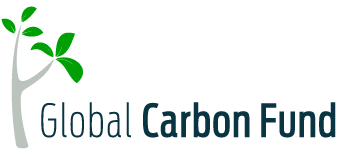Microsoft and IAG Extend SAF Deal to Slash 113,000 Tonnes of Scope 3 Emissions
Microsoft and International Airlines Group (IAG), the parent company of British Airways, Iberia, Vueling, Aer Lingus, LEVEL, IAG Loyalty, and IAG Cargo, have extended their groundbreaking Sustainable Aviation Fuel (SAF) deal by five more years. It aims to support Microsoft’s goal to reduce Scope 3 lifecycle emissions from business travel and air freight.
- Explaining further, Microsoft will co-fund an additional 39,000 tonnes of SAF that will cut 113,000 tonnes of lifecycle emissions.
The renewed agreement is an extension of their 2023 collaboration, when both companies pledged to support low-carbon aviation. For Microsoft, it’s a huge step toward achieving its 2030 carbon-negative goal.
Microsoft Targets Scope 3 Emissions with Major SAF Deal
Microsoft’s Scope 3 emissions rose by 30.9% in 2023 compared to its 2020 baseline. This increase was mainly due to the growth of its data center operations and the hardware needed to support them. Business travel and air freight also remain major contributors.
- Total greenhouse gas (GHG) emissions were 15.4 MtCO₂e in 2023, a 29.1% rise compared to the 2020 baseline.
- Currently, over 96% of Microsoft’s total emissions come from Scope 3.

The tech giant is already boosting clean energy use across its supply chain and investing in low-carbon technologies for hard-to-decarbonize industries, such as steel, concrete, and other building materials used in its data centers.
The company’s $1 billion Climate Innovation Fund has already invested in LanzaJet, showing the company’s strong commitment to supporting next-generation fuel solutions and accelerating climate technology.
Thus, this deal is a significant part of Microsoft’s net-zero emissions pathway. It expects SAF use to make a notable impact on its air travel and freight shipments’ emissions.

SAF: A Key Step Toward Greener Flights, But Challenges Remain
Sustainable aviation fuel (SAF) is a cleaner alternative to traditional jet fuel. According to the ReFuelEU Aviation Regulation, SAF includes synthetic fuels, biofuels made from plant or waste materials, and recycled carbon fuels and not fossil fuels.
While it doesn’t cut emissions from aircraft engines directly, it lowers overall greenhouse gas (GHG) emissions when considering the full life cycle, i.e., from production to use.
- SAF reduces carbon emissions (on a greenhouse gas lifecycle basis) typically by 80% or more compared with the fossil jet fuels it replaces.
However, there are still big hurdles. Both IAG and Microsoft have acknowledged that scaling SAF production remains a challenge, largely due to high costs. SAF is still 3 to 4 times more expensive than traditional jet fuel. Notably, a small percentage of airline fuel today is SAF. Its production and availability need to grow much faster to make a real impact.
Consequently, the European Union introduced the ReFuelEU Aviation Regulation. It’s also a part of the Fit for 55 plan that aims to cut emissions by 55% by 2030.

The regulation pushes fuel suppliers at EU airports to gradually mix more SAF into their fuel blends. Eventually, it can make the shift toward more sustainable flying easier.
The SAF will be sourced from two locations:
- Phillips 66’s refinery in Humberside, UK, using used cooking oil and food waste.
- LanzaJet’s Freedom Pines Fuels facility in Georgia, USA, using bioethanol.
Both SAF sources are ISCC-certified (International Sustainability & Carbon Certification). Additionally, the SAF used in this deal will not add new fossil carbon to the atmosphere as it recycles existing carbon.
How the Deal Benefits IAG and What are its Future Plans
However, this SAF deal benefits both Microsoft and IAG. While Microsoft can control its emissions from travel and freight, IAG can boost its SAF investments and lower its direct flight emissions.
IAG airlines follow carbon reduction rules under the EU, UK, and Swiss Emissions Trading Schemes. They also support CORSIA’s global plan to cap net aviation emissions.
Emission Reduction Goals
IAG aims to have net-zero emissions by 2050.
- By 2025, it plans to cut carbon emissions per passenger kilometer by 10%—from 87.3g in 2020 to 80g.
To reach this, they’re adding 142 new aircraft that burn up to 25% less fuel. This also brings fuel use down to just 3.17 liters per 100 passenger kilometers.
- By 2030, it intends to bring net emissions down to 22 million tonnes. That would be a 20% drop and will save 160 million tonnes of CO₂ over the decade.

Boosting SAF Use
Notably, the sustainable fuel from this agreement will power flights across IAG’s brands, including British Airways. In 2021, it set a target of using one million tonnes of SAF annually by 2030. Currently, the airline uses SAF for 1.9% of its total annual fuel. The right policy support could cut as much carbon as taking one million cars off the road annually.
- By 2030, IAG aims to increase SAF use 100 times compared to 2022 levels. Its target is to reach 10% SAF by 2030 and 70% by 2050.

As of last December, the company had committed over $3.5 billion to SAF offtake deals. This is based on expected energy prices and contract terms.
This deal shows how companies can drive greener skies. By supporting cleaner fuels like SAF and influencing wider supply chains, Microsoft and IAG are taking the right steps to fight climate change.
The post Microsoft and IAG Extend SAF Deal to Slash 113,000 Tonnes of Scope 3 Emissions appeared first on Carbon Credits.



